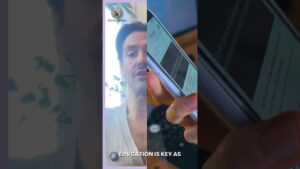Collider: Why Ability Privilege Perpetuates Itself
In systems thinking, a collider is a variable influenced by two or more independent factors—and Ashtanga’s authorization system contains a perfect example that explains why the current model is so resistant to change.
Consider the collider: “Becoming an Authorized Teacher”
This outcome is influenced by two largely independent variables:
- Variable X: Advanced asana capability (physical achievement)
- Variable Y: Teaching aptitude (pedagogical skill, empathy, communication ability, capacity to work with diverse bodies)
In an ideal system, both would be required for authorization. But the current Ashtanga authorization process primarily conditions on X (asana achievement), creating what statisticians call collider bias—a systematic distortion that produces misleading correlations.
Here’s how the collider creates dysfunction:
The Selection Bias
When we only examine people who’ve achieved authorization (conditioning on the collider), we’re looking at a pre-filtered population. Within this group, we might observe that teachers with exceptional asana ability sometimes struggle with diverse students, while teachers with more modest practices sometimes excel at adaptive teaching.
The system then draws a false conclusion: “Teaching skill and practice depth must be unrelated, or even inversely related.” This leads to the defensive claim: “You don’t need advanced practice to teach well,” which traditional practitioners correctly identify as threatening to standards.
But this misses the actual causal structure. Advanced practice ability and teaching aptitude are independent variables—neither causes nor prevents the other. The problem isn’t that we’re authorizing people with advanced practices; it’s that we’re only conditioning on one variable when both matter.
The Compounding Effect
The collider creates a self-reinforcing cycle:
- Selection into teaching primarily filters for asana achievement
- Authorized teachers disproportionately share similar body types, injury histories, and learning styles
- Teaching methods reflect what worked for this narrow population
- Student attrition is highest among people unlike the teachers
- Remaining students increasingly resemble the teachers (survivorship bias)
- Future authorizations draw from an even narrower pool
- The cycle repeats, intensifying with each generation
This explains why well-intentioned teachers often can’t see the problem. They’re observing a system that appears to work—because everyone who couldn’t succeed in it has already left.
The False Trade-Off
The collider also creates a perceived trade-off between “maintaining standards” and “increasing accessibility.” Traditional practitioners worry that emphasizing teaching skills will lower practice standards. Reformers worry that maintaining high practice standards will perpetuate exclusion.
But this is a false dichotomy created by the collider. We’re not choosing between X and Y—we need both. The solution isn’t to lower practice standards or eliminate the importance of personal practice depth. It’s to also condition on teaching aptitude.
Authorization should require:
- Variable X: Demonstrated practice depth (not necessarily advanced asana, but sustained, sincere practice over time)
- AND Variable Y: Demonstrated teaching effectiveness across diverse populations
Both matter. Both are measurable. Neither negates the other.
The NFL Parallel
NFL teams learned this lesson expensively. They kept hiring former star players as coaches (conditioning on performance ability alone), then acting surprised when many failed. The collider made it appear that playing ability and coaching ability were unrelated.
The solution wasn’t to stop valuing playing experience—it was to also evaluate coaching aptitude through assistant positions, coordinator roles, and demonstrated teaching ability before handing someone a head coaching position.
Some of the NFL’s greatest coaches (Bill Walsh, Tony Dungy, Bill Belichick) had modest playing careers but exceptional teaching minds. Some great players became great coaches (Mike Ditka, Tom Flores). Many great players became mediocre coaches. The variables are independent—success requires both domains.
Measuring What Matters
In my decade of research school data, I’ve tracked both variables:
Variable X (Practice Depth): Years of consistent practice, demonstrated understanding of the method, ability to maintain personal practice through life changes
Variable Y (Teaching Effectiveness): Student retention across body types, injury rates, student-reported clarity of instruction, ability to modify in real-time, communication across contexts
The data shows no negative correlation between these variables. Deep practitioners who develop teaching skills are remarkably effective. Modest practitioners who develop teaching skills serve their students well within their scope. The problems arise when either variable is absent—regardless of the other’s presence.
Breaking the Collider Cycle
To interrupt the self-perpetuating system, we need authorization structures that explicitly evaluate both variables:
For Variable X (Practice Depth):
- Sustained practice over time (years, not just hours)
- Understanding of the method’s structure and philosophy
- Ability to maintain practice through obstacles
- Personal transformation through practice
For Variable Y (Teaching Aptitude):
- Documented work with diverse body types
- Student outcomes data (retention, injury rates, progress)
- Peer observation feedback
- Communication skills across contexts
- Real-time problem-solving and modification ability
This isn’t revolutionary—it’s how education credentialing, medical residencies, and coaching development already work. Teachers aren’t authorized based solely on their own academic achievement; they demonstrate teaching effectiveness. Doctors aren’t licensed based only on test scores; they complete supervised clinical practice. Coaches aren’t hired based only on playing careers; they prove coaching ability through progressive responsibility.
The Systems Intervention
Understanding the collider reveals the leverage point: Change what we condition on for authorization.
This doesn’t require dismantling the tradition or eliminating practice standards. It requires recognizing that teaching authorization is currently filtering on one variable when it should filter on two.
The resistance to this change is predictable and reveals the collider at work. Teachers who succeeded under the current system (conditioning on X alone) often possess both X and Y—they’re skilled practitioners AND effective teachers. But because the system never explicitly evaluated Y, they don’t recognize it as a distinct requirement. Their success feels like it came from X alone, so they resist adding Y as a separate criterion.
It’s similar to how naturally gifted athletes often can’t articulate their technique—it feels intuitive, not learned. But teaching requires making the implicit explicit, which means recognizing and developing Variable Y as a distinct skill set.



